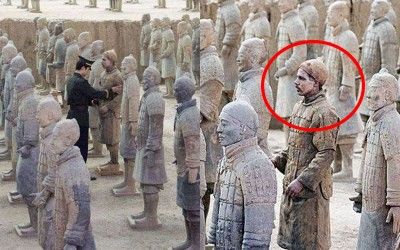
Why Was the Terracotta Army Buried with Qin Shi Huang?
The Terracotta Army: An Overview
The Terracotta Army is a vast collection of terracotta sculptures discovered in 1974 near Xi'an, China. These figures, depicting the armies of Qin Shi Huang, the first emperor of China, are a significant example of ancient Chinese artistry and military history.
The Purpose of the Terracotta Army
The Terracotta Army was not merely decorative; it served a crucial purpose in the emperor's afterlife. The ancient Chinese believed in an afterlife mirroring the earthly realm. Qin Shi Huang, driven by a desire for eternal power and protection, commissioned the creation of this army to serve him in the next life. Just as in his earthly reign, he would need an army to defend his rule, quell rebellions, and conquer new territories in the afterlife.
Qin Shi Huang's Belief in the Afterlife
Qin Shi Huang's reign was marked by a relentless pursuit of immortality. He invested heavily in alchemists, seeking elixirs of life, and undertook elaborate rituals hoping to cheat death. The emperor's belief in an afterlife and his pursuit of immortality were deeply intertwined. He believed that just as he had unified China in life, he could rule in the afterlife with the same might and authority.
The Army as a Symbol of Power and Authority
The Terracotta Army's sheer scale reflects Qin Shi Huang's immense power and ambition. It is estimated that over 8,000 life-sized soldiers, 130 chariots with 520 horses, and 150 cavalry horses were buried in the complex. Each figure was meticulously crafted with unique facial features, hairstyles, armor, and weaponry, reflecting the strict military hierarchy of the Qin dynasty. This meticulous detail highlights the emperor's desire to project his power and authority even in death.
Protection and Safe Passage
Beyond military might, the Terracotta Army also served a protective role. They acted as guardians, warding off evil spirits and ensuring the emperor's safe passage to the afterlife. This belief in the protective power of funerary objects was common in ancient Chinese culture, with tombs often filled with items believed to serve the deceased in the next life.
Conclusion
The Terracotta Army stands as a testament to Qin Shi Huang's ambition, his belief in the afterlife, and his desire for eternal power. These silent sentinels, frozen in time, offer us a glimpse into the opulent burial rituals and beliefs of ancient China, while also providing valuable insights into the military organization and artistic achievements of the Qin dynasty.
Q&A
1. When was the Terracotta Army discovered?
The Terracotta Army was discovered in 1974 by farmers digging a well near Xi'an, China.
2. What is the significance of the different poses and expressions of the Terracotta Army figures?
The variations in poses and expressions are not random; they reflect the different roles and ranks within the Qin army. This attention to detail highlights the strict military hierarchy of the time.
3. Why is the Terracotta Army considered one of the greatest archaeological discoveries of the 20th century?
The discovery of the Terracotta Army provided invaluable insights into ancient Chinese civilization, military practices, artistry, and beliefs about the afterlife. Its scale and exquisite craftsmanship have captivated the world, making it one of the most significant archaeological finds in history.